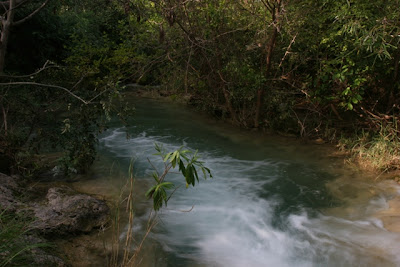Pakistan A Heaven On Earth, Pakistan is blessed by natural beauty there are hundred of places to visit. World second largest Mountain K-2 is located in Pakistan.
Pakistan has its own tourism attraction because of its diverse cultures, peoples and landscapes. The variety of attractions ranges from the ruins of ancient civilisations such as Mohenjo-daro, Harappa and Taxila, to the Himalayan hill-stations, that attract those interested in field and winter sports. Pakistan also has five out of fourteen mountain peaks of height over 8,000 metres (26,250 ft), that attract adventurers and mountaineers from around the world, especially to K2. From April to September, domestic and international visitors to these areas bring tourist income to the local people.
Shangrilla resorts & Lake
Deosai Pakistan
The Deosai National Park is located in Skardu, Gilgit-Baltistan, Pakistan.
In Balochistan there are many caves for cavers and tourists to visit especially the Juniper Shaft Cave, the Murghagull Gharra cave, Mughall saa cave, and Pakistan's naturally decorated cave, the Mangocher Cave. Pakistan is a member country of the Union International de Spéléologie (UIS).
Beautiful Sheosar lake in Deosai,Pakistan
Monument, Islamabad
A waterfall located at Pir Ghaib near Bolan in Balochistan.It is so blue and Beautiful that we cant even think that it is located inside the barren landscape
The northern parts of Pakistan are home to several historical fortresses, towers and other architecture including the Hunza and Chitral valleys, the latter being home to the Kalash, a small pre-Islamic Animist community.Punjab is also the site of Alexander's battle on the Jhelum River. The historic city of Lahore is considered Pakistan's cultural centre and has many examples of Mughal architecture such as the Badshahi Masjid, Shalimar Gardens, Tomb of Jahangir and the Lahore Fort. The Pakistan Tourism Development Corporation (PTDC) also helps promote tourism in the country. However, tourism is still limited because of the lack of proper infrastructure and the worsening security situation in the country. The recent militancy in Pakistan's scenic sites, including Swat in Khybar Pakhtoon Kawa province, have dealt a massive blow to the tourism industry. Many of the troubles in these tourist
destinations are also blamed on the frail travel network, tourism regulatory framework, low prioritisation of the tourism industry by the government, low effectiveness of marketing and a constricted tourism perception. After these areas were being cleared off the militant groups in late 2009, the government, with
financial support from the USAID, started a campaign to reintroduce tourism in Swat valley. Pakistan receives 500,000 tourists annually, with almost half of them heading to northern Pakistan.
Amazingly Beautiful Shimshal Lake
The beautiful snow clad mountains at Siri Paye,Pakistan
Hingol National Park is the largest National Park in Balochistan Pakistan . It was established in 1988. Hingol River flows through the national park before emptying into the Arabian Sea
Hingol National Park
Jhalked The beautiful place in kaghan valley.
Malam Jabba
Malamjabba Resort
Neelum Valley in Azad jammu and Kashmir which is in Pakistan's Control
Strange landscape on the way to Gwadar from Karachi.On the way you will see plenty of viewslike this
The Beautiful flowers spreaded on babusar Pass ,Pakistan.2There were flowers of almost every color there
The beautiful Karambar lake and Karambar Pass at 4300 m approx above sea level in Chitral,Pakistan
The beautiful mountains of Hindu raj in Ishkoman resembles almost the China 's Tibet in their beauty
The beautiful river Swat passing through beautiful forests in Swat valley Pakistan
The beautiful valley of Chillam in northern areas of Pakistan .
The Beautiful Village in the Mountains of Hindu Raj named as Kishmanja in Upper yarkhun valley,Chitral
This lake is located in Neelum Valley ,Ajk(Azad Jammu & Kashmir ) Pakistan.The name of lake is Chitta Katha



 a
a



































